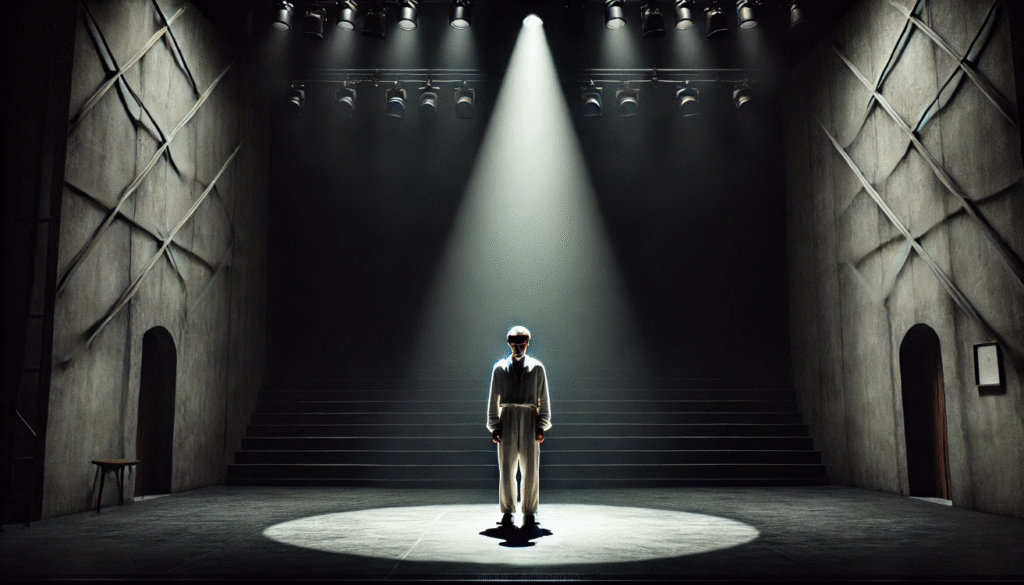
Why do Key Shakespearean soliloquies characters speak their deepest thoughts aloud when no one else is listening? The answer lies in one of his most powerful dramatic tools: the soliloquy. In this article, you’ll find Key Shakespearean soliloquies explained—not just what they say, but why they matter. These iconic moments pull back the curtain on characters’ private fears, ambitions, and dilemmas, offering an unfiltered view into their minds. Whether it’s Hamlet pondering existence or Macbeth grappling with guilt, soliloquies give us front-row seats to the inner lives of some of literature’s most complex figures. Let’s explore their meaning, context, and enduring impact.
What Is a Soliloquy?

A Key Shakespearean soliloquies is a speech delivered by a character alone on stage, sharing their inner thoughts directly with the audience. It’s a way for the character to think out loud, often revealing secrets, fears, or decisions they haven’t shared with others.
Unlike a monologue, which may be heard by other characters, a soliloquy is private. It’s meant to give the audience direct access to the character’s mind.
In Key Shakespearean soliloquies are powerful tools. They help us understand what a character truly feels—beyond their actions or words to others. They also move the story forward by showing emotional shifts, inner conflict, or hidden motives.
Understanding Key Shakespearean soliloquies helps readers and viewers connect more deeply with Shakespeare’s characters and themes.
Why Shakespeare’s Soliloquies Stand Out
Shakespeare’s soliloquies stand out because they do more than just reveal thoughts—they bring characters to life. Through rich language and emotional depth, these speeches let us see what characters are really feeling, even when they try to hide it from others.
Shakespeare used poetic tools like imagery, rhythm, and metaphor to make each soliloquy powerful and memorable. Lines like “To be or not to be” or “Is this a dagger which I see before me” stay with us because they capture universal struggles—like fear, doubt, ambition, and grief.
These soliloquies also help the audience connect with the character on a personal level. They show human emotions we all recognize, which is why they still resonate today.
When exploring Shakespeare soliloquies explained, it’s clear they are more than just speeches—they’re windows into the soul of the play.
Key Shakespearean Soliloquies: Explained in Detail

Shakespeare’s soliloquies are some of the most famous passages in literature. Below, you’ll find key Shakespearean soliloquies explained—each with a quick look at the scene, meaning, and why it matters.
Context: Hamlet is alone, questioning life and death.
Meaning: He wonders if it’s better to suffer through life or end it.
Impact: This soliloquy captures deep human fear and uncertainty. It’s a timeless reflection on existence.
“Is this a dagger which I see before me” – Macbeth
Context: Macbeth sees a vision before killing King Duncan.
Meaning: The dagger shows his inner struggle with guilt and ambition.
Impact: It reveals how his desire for power is clouded by fear and doubt.
“Now is the winter of our discontent” – Richard III
Context: Richard opens the play, speaking directly to the audience.
Meaning: He hides his evil plans behind clever words.
Impact: It introduces him as a smart and dangerous character.
“O, what a rogue and peasant slave am I!” – Hamlet
Context: Hamlet feels ashamed after watching an actor cry on cue.
Meaning: He criticizes himself for not acting on his revenge.
Impact: It shows his self-doubt and frustration, adding depth to his delay.
“Out, out brief candle” – Macbeth
Context: Macbeth reacts to his wife’s death and his collapsing world.
Meaning: He compares life to a short, meaningless flicker.
Impact: This soliloquy shows his loss of hope and purpose.
These soliloquies give us powerful insights into Shakespeare’s characters. Each one shows a moment of truth, emotion, or change—and that’s what makes them unforgettable.
Common Themes Across These Soliloquies

When looking at Shakespeare soliloquies explained, several powerful themes appear again and again. These themes help us understand what drives the characters and why these moments are so memorable.
Inner Conflict
Many soliloquies reveal a character battling with themselves. Hamlet questions life, Macbeth wrestles with guilt, and Richard plans deceit. These inner struggles make the characters feel real.
Ambition and Power
Shakespeare often shows how ambition can lead to downfall. Macbeth’s desire for the crown and Richard’s hunger for control are fueled by power—but it comes at a cost.
Life and Death
Questions about life’s meaning, fear of death, and what comes after are central themes. These soliloquies explore human fears we all face.
Guilt and Conscience
Characters like Macbeth are haunted by their choices. Shakespeare uses soliloquies to show how guilt can grow and take over the mind.
Identity and Self-Awareness
Characters reflect on who they are and what they’ve become. This theme adds depth and invites the audience to see their transformation.
These common themes help make Shakespeare’s soliloquies timeless. They speak to emotions and questions that are still relevant today.
How Understanding Soliloquies Deepens Your Connection with Shakespeare

Understanding Shakespeare soliloquies explained opens a new world in his plays. When you grasp what a soliloquy means, you get closer to the character’s true feelings and struggles.
Soliloquies reveal honest emotions that characters don’t share with others. This honesty creates a special bond between the audience and the character, making the story more personal and powerful.
By exploring these speeches, you also appreciate Shakespeare’s skill with language—the way he uses words to express complex ideas simply and beautifully.
Finally, soliloquies connect Shakespeare’s themes to our own lives. Questions about life, ambition, and identity remain relevant, helping you see the plays not just as old stories but as reflections of human nature.
In short, understanding soliloquies helps you enjoy Shakespeare on a deeper, more meaningful level.
Tips for Reading and Interpreting Shakespearean Soliloquies

Reading Shakespeare’s soliloquies can feel challenging, but these simple tips make it easier and more enjoyable.
Read Aloud: Shakespeare’s language flows with rhythm and emotion. Reading aloud helps you hear the feelings behind the words.
Look Up Unfamiliar Words: Some words are old or have different meanings today. A quick dictionary check helps clear confusion.
Paraphrase in Your Own Words: After reading, try rewriting the soliloquy in simple language. This deepens your understanding.
Pause and Reflect: Take your time. Think about what the character is feeling and why.
Watch Performances: Seeing actors bring soliloquies to life can reveal new layers of meaning. Look for famous versions online or in theaters.
Using these tips, you’ll find Shakespeare’s soliloquies more accessible and meaningful, helping you connect with his timeless stories.
 Shakespeare’s soliloquies offer a rare glimpse into the hearts and minds of some of literature’s most unforgettable characters. By exploring their meaning, context, and impact, we can better understand the emotions and struggles that drive these timeless stories.
Shakespeare’s soliloquies offer a rare glimpse into the hearts and minds of some of literature’s most unforgettable characters. By exploring their meaning, context, and impact, we can better understand the emotions and struggles that drive these timeless stories.
Whether it’s Hamlet’s deep questions about life or Macbeth’s haunted guilt, these speeches connect us to universal themes that still resonate today.
Next time you read or watch a Shakespeare play, pay close attention to the soliloquies—they are the key to unlocking the true depth of his characters and the power of his writing.













